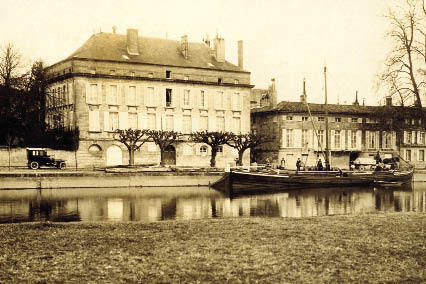Bernard Hine has impeccable manners. However, as we meet for an apéritif at Hine House, he is a little disgruntled. The source of his unhappiness is a stomach upset which means he is unable to indulge in the foie gras and the 1953 Vintage port, among other treats. A lesser man would have made his excuses, but Bernard’s sense of duty and hospitality doesn’t permit such a course of action. Indeed, his discontent appears to be based more on his inability to fully participate in the dinner than any personal inconvenience.
The surroundings are historic: Hine House, one of the oldest in Jarnac, has stood on the banks of the Charente for more than 250 years. Following his arrest during the French Revolution, Thomas Hine, an Englishman from Dorset, married a French girl whose father owned a Cognac house; the business was renamed Thomas Hine & Co in 1817.
Hine specialises in single-vintage Cognacs from the Grande Champagne region. According to Bernhard Hine, the sixth generation of his family involved in the business, ‘The vintage is the year the grapes were harvested, the quality of the wine being very closely linked to the conditions of soil and climate prevailing that year.’ In Jarnac, Hine maintains tradition; during great years, the family sets aside casks of the most exceptional Cognacs and, upon reaching peak maturity, these are either transferred into demi-johns or bottled immediately.
A small number of bottles of the landmark 1961 vintage are being released in the UK (Berry Bros & Rudd £495). It was an extremely small crop in the region: heavy late spring frosts and lower than average rainfall between May and October concentrated the aromas and flavours in the grapes. Hine describes the 1961 as ‘a powerful vintage with a bright amber colour, aromas of nuts, orange peel and soft spices, a powerful palate and great depth reminiscent of hazelnuts and crème brûlée and an extremely long aftertaste’.
Hine also adheres to another, altogether more British tradition; some of their Cognacs are matured in damp vaulted cellars in the village of Wickwar near Bristol. For obvious reasons, these vintages are called ‘Early Landed’ and the 1981 is now being unveiled (Fortnum & Mason, £190). There were late spring frosts during 1981 as well, a wet summer and, unusually, a frost during the harvest, but the eaux-de-vie of this year developed a rare fruity harmony. The 1981 Early Landed was shipped in French oak casks at the end of 1983. Pale amber in colour with an aroma hinting at honey and apricots, this Cognac has a silky, soft palate with crystallised and dried fruit flavours and an elegant well-balanced finish.
For Bernard Hine the glory of Cognac lies in the fact that ‘long ageing and wood influence make for a very balanced taste – the spirit is changing but shows great delicacy, balancing aromas and taste’. It is Hine’s view that Cognac is a spirit which shouldn’t be considered as alcohol, but as a top-quality wine: ‘It has the character of wine from which it is distilled, and the language of Cognac has nothing to with terms used to describe spirit tasting.’
It is Hine’s opinion that the ideal time to enjoy Cognac is ‘in a quiet moment or in a convivial atmosphere with friends. When I am relaxed with no problems to solve I enjoy a Hine Early Landed Vintage Cognac with some wood presence, but not too much; I have to be careful as I like to talk about Cognac in the way some people talk about their children.’
Away from work, Hine enjoys hunting and shooting, with a preference for the latter these days. ‘This is good country as we have boar and deer only about 40 minutes away. My perfect day starts with a good breakfast, a misty morning as day breaks and then excellent shooting with old friends. A hipflask of Cognac is useful.’
An unparalleled selection of Hine Cognacs is available at the Coburg Bar in the Connaught Hotel.





Comments